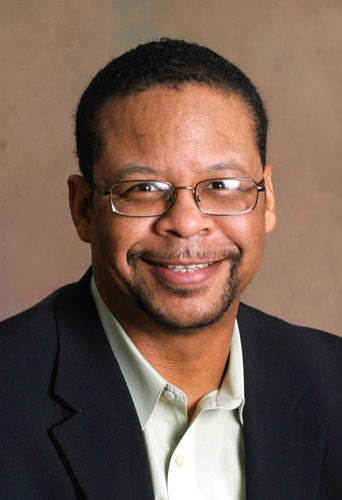BY MIKE GREEN | OB BLOGGER
Addressing the problems of the poor is a common theme that serves as a backdrop to issues of family, education, jobs, homelessness, health care and public taxation. Oregon’s most promising approach is its “Prosperity Initiative,” championed by First Lady Cylvia Hayes.
BY MIKE GREEN | OB BLOGGER
Addressing the problems of the poor is a common theme that serves as a backdrop to semi-polite discourse on issues of family, education, jobs, homelessness, health care and public taxation. Perspectives regarding how our society should deal with the poor are often personal and sensitive. They touch on deeply held religious, political and economic beliefs. Implied in our discourse is the assumption that the pathway from poverty to prosperity flows through our system of public education coupled with a strong work ethic and personal responsibility.
But, given a disparate education system along socio-economic fault lines and wildly varying workforce opportunities in any given region around the state, what are the odds that the poor in Oregon can truly prosper? New scientific data suggest upward mobility may be beyond the control of the individual.
A recent national study by top economists provided a data map that revealed huge disparities in upward mobility for the poor across states, cities and regions. At best, the average child born to a family in the lowest fifth of income earners in the U.S. has less than a 12% chance of climbing to the top fifth in 30 years. For those with egalitarian and meritocratic dreams for America, this data is a wake-up call.
Given an upside-down public education system, where the best schools are typically reserved for wealthy communities, a good education for low-income students isn’t always within reach. Workforce opportunities, regardless of work ethic, aren’t necessarily available locally. Geography plays an important role.
According to the national study, a poor child in eastern Oregon has a 1 in seven chance of escaping poverty, while in Portland the numbers are 1 in 11. Economists caution that their data show geographic correlation but not causation. The study highlights two primary points:
- Upward mobility for the poor in most states in the U.S. is stilted.
- Location matters. Different regions, even within states, have varying rates of upward mobility.
California boasted four cities in the top 10 metro areas in the nation for upward mobility (San Jose, San Francisco, Sacramento and San Diego). That doesn’t necessarily mean low-income Oregonians should pack up and head south. A common societal feature for those cities, and others in the top 10 (like Salt Lake, Seattle, Boston and New York), is they all have thriving startup ecosystems. So do a few Oregon cities (Ashland, Bend, Corvallis and the Portland-Beaverton region). Entrepreneurship is a wealth-building platform that’s core to the nation’s overall approach to economic competitiveness and an exemplary application of a good educational foundation.
While the study reveals nearly every state is struggling with developing a successful system of upward mobility, Oregon’s most promising approach is an initiative championed by Oregon First Lady, Cylvia Hayes. Her insights and impassioned voice on issues impacting the poor in Oregon stem from her own experience growing up in extreme poverty with associated family problems. Hayes used the scaffolding of education and entrepreneurship to climb out of her economic plight. Today, those principles are core components of the Oregon Prosperity Initiative.
“One of the trends in workforce development, no matter where you’re starting from on the income spectrum, is that entrepreneurship is going to become increasingly important,” Hayes said in a phone interview. “More and more people will be creating their own jobs.”
Hayes’ approach to empowering the poor to become job creators builds on the premise that perceives the poor as assets (versus liabilities) in our society. The common approach to helping poor families is through charity. But we need not stop there. Investing in developing the creativity, talents and skills of low-income students and adults, with the goal of producing a pipeline of innovators — both in the increasingly tech-based workforce and across a tech-driven entrepreneurial landscape — can ultimately strengthen the economic competitiveness of the state.
Hayes notes her volunteer Prosperity team is highlighting good ideas already in place in regions across Oregon that could use support to scale up local innovation ecosystems. From entrepreneurial efforts focused on farm workers to educational resources and micro-loans that seed entrepreneurial enterprises, Hayes believes Oregon is awash with existing efforts that are making a difference.
“I think this is a tremendous opportunity that we’ve just scratched the surface on,” Hayes said. “[Poverty] is not just a human tragedy, it’s an economic development issue.”
Her team is considering a string of Prosperity Summits that convene local stakeholders engaged in efforts addressing the issue of poverty in their regions to network, discover best practices and find opportunities for collaboration.
The Oregon Prosperity Initiative is a positive step with an ambitious goal to reduce poverty statewide by 2020 to below 10%. If successful, perhaps it can be used as a framework for improving the odds of upward mobility for the poor across America.
 Editor’s note: Cylvia Hayes will headline a panel on anti-poverty issues at the Oregon Business Summit December 9 in the Oregon Convention Center.
Editor’s note: Cylvia Hayes will headline a panel on anti-poverty issues at the Oregon Business Summit December 9 in the Oregon Convention Center.
Mike Green blogs on equity and entrepreneurship for Oregon Business.





